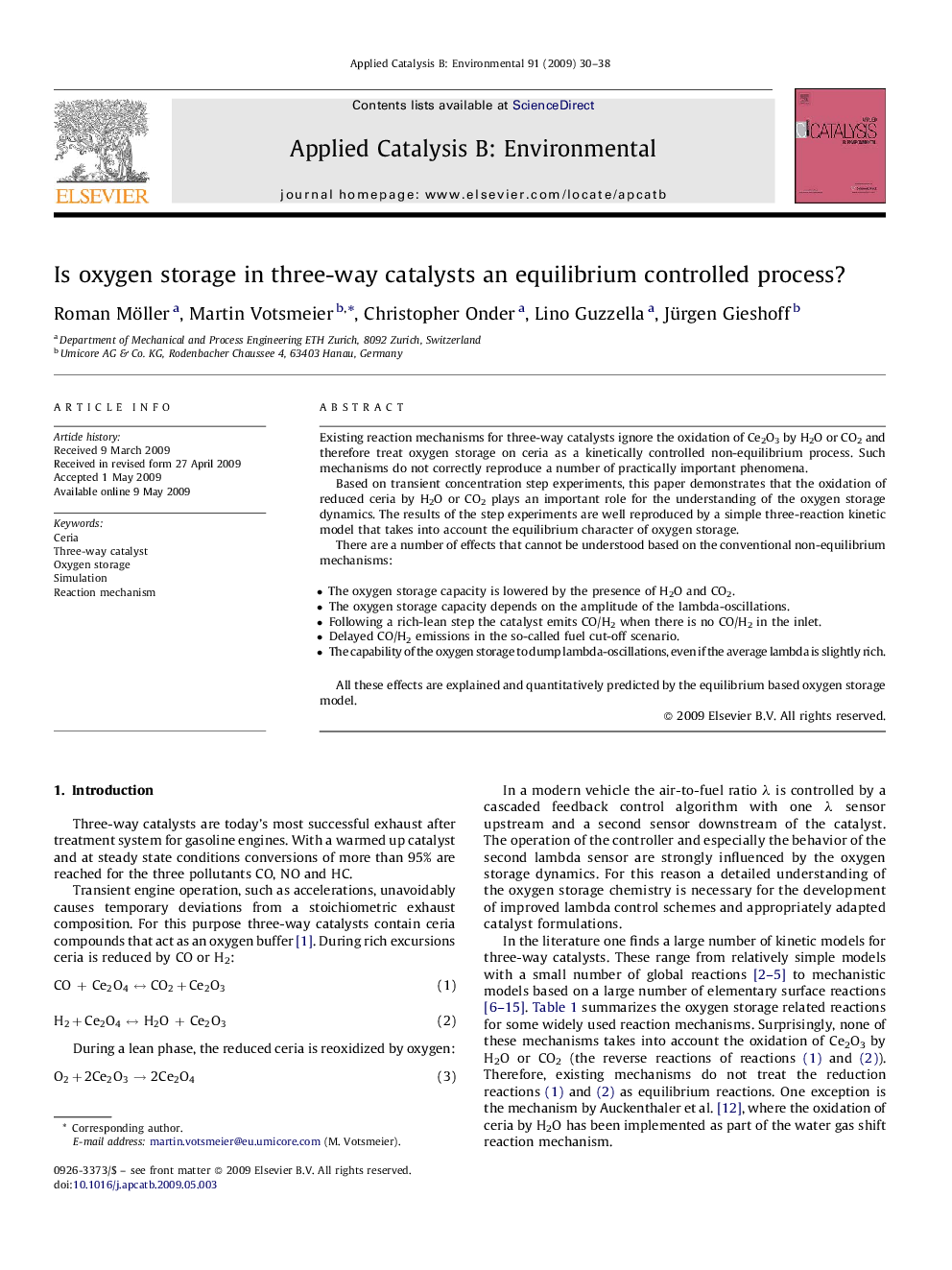| Article ID | Journal | Published Year | Pages | File Type |
|---|---|---|---|---|
| 47707 | Applied Catalysis B: Environmental | 2009 | 9 Pages |
Existing reaction mechanisms for three-way catalysts ignore the oxidation of Ce2O3 by H2O or CO2 and therefore treat oxygen storage on ceria as a kinetically controlled non-equilibrium process. Such mechanisms do not correctly reproduce a number of practically important phenomena.Based on transient concentration step experiments, this paper demonstrates that the oxidation of reduced ceria by H2O or CO2 plays an important role for the understanding of the oxygen storage dynamics. The results of the step experiments are well reproduced by a simple three-reaction kinetic model that takes into account the equilibrium character of oxygen storage.There are a number of effects that cannot be understood based on the conventional non-equilibrium mechanisms:•The oxygen storage capacity is lowered by the presence of H2O and CO2.•The oxygen storage capacity depends on the amplitude of the lambda-oscillations.•Following a rich-lean step the catalyst emits CO/H2 when there is no CO/H2 in the inlet.•Delayed CO/H2 emissions in the so-called fuel cut-off scenario.•The capability of the oxygen storage to dump lambda-oscillations, even if the average lambda is slightly rich.All these effects are explained and quantitatively predicted by the equilibrium based oxygen storage model.
